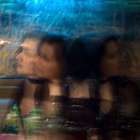To care, to cure, to comfort (pandemic remix)
Posted March 24, 2020 by Nik Gaffney and Maja KuzmanovićA condensed remix of some our thinking around care and uncertainty. Dedicated to all the carers near and far. In hospitals and quarantine, on delivery trucks and behind the grid, on the emptying streets and inside their homes... To all those providing essential services and all those in isolation or lockdown. To all who care. To all...
“I can’t help but worry when the scrap metal will run out, and whether there will be enough other stuff in the ruins to make continuing survival possible. And while not all of us enact such a literal figuration of living in ruins, we mostly do have to work within our disorientation and distress, to negotiate life in human-damaged environments. Without the singular, forward pulse of progress, the unregularized coordination of salvage is what we have.”
–Anna Tsing
And yet, we do know how to work with contingencies. All of us still wake up and and get to work on things that we believe are good, without any certainty of success. Our contingency reserves are not just stockpiles of money, food and medicine, but also relationships, carefully cultivated over time and across continents. Relationships with people and places that give us hope. When we think of it this way, every activity has the potential to become a re-animating force, an act of caring.
To care, to cure, to comfort. To be with. To help cope, regardless of the situation. “Being with” involves allowing yourself to be touched by the joys and sorrows of another. To be touched by external circumstances. Thrown off-course by the sheer rawness of the moment, by your own inability to make things better, by our fragility, impermanence and mortality.
We learn to “be with” when looking after a sick child, tending to a garden, or when caring for the dying. “Being with” a person or a process that you can’t quite understand can be frightening and uncomfortable, yet it can also become an instrument for discernment, a compass for navigating ambivalence. Care first, do later.
The work of care in the Anthropocene is a struggle with scale and scope and sentience. What does care for a burning forest look like? For an unstoppable flood? For an economy in crisis? For the endless migration of humans and other animals? For an out of balance microbiome in one’s gut?
If we assume that the entire material bestiary has some form of sentience, how do we respond to climate change, pandemics, mass extinction or speciation? Even if we are not directly responsible for the causes, each of us is responsible for how we live with the consequences. Responsible to and for each other.
Do you care?
How do you care?
Where do you learn how to care?
How can you care for something, able to consume you completely?
The space of care exists in parallel to the space of “problems” and “solutions”. Underneath the litany of blame and judgement. Beneath economic systems and ecosystems. Beneath worldviews and opinions. Deep, deep down in a place where words and worlds are intertwined. Where myths and metaphors grow from the direct experience of entangled relationships. Transferred through a touch, a broken bone, a bedtime story.
The patterns of care solidify through repetition. From thoughts to words, from words to actions, from actions to habits and from habits to character. From a person to a clan to a culture. This process takes time. An instant in geological time, generations in human time.
Maybe in order to care across spatial and temporal scales — to care for a loved one as much as for an eroding hill or decaying infrastructure — we need alternatives to the current cultural imaginaries. They need queering and complexifying. We need new stories to live by. New or alternative myths, drawn from ever more diverse mythologies.
Perhaps most urgently we need stories that can cultivate our internal landscapes. Widen the reach of the human sensorium. Activate the unknown. Transform reactions into responses. Rewire our neural pathways. Embody other mindstates. Entangle our grey matter with machines for seeing otherwise.
Until we stop taking ourselves so seriously (or not seriously enough). Until our individual identities are shattered and smeared and re-congealed innumerable times. Until we understand that we exist because of and despite relating to everything else. Until we understand that we are hydrogen ripped from its context, mixed with the dust of dead stars. That we are endlessly recycled water and crystalising cyclones. That we are teeming civilisational hosts. Most importantly, that we are capable of care. To care for humans and to care for the earth. Care as an antidote to nihilism, greed or indifference. Care as the potion we can take to remember that we are inseparable from all animate matter.
Take heed from the Overstory. “Keep still. Wait. Something in the lone survivor knows that even the ironclad law of Now can be outlasted. There’s work to do. Star-work, but earthbound all the same.”
This text includes excerpts from:
- Green: Multispecies Entanglements, a reader suggesting different ways to cultivate open-ended engagements with the planet and its inhabitants
- Crystal: Navigating Uncertainty, a reader exploring how to proactively engage with whatever crosses your path, prototype possible futures, seed new realities, and grow your own worlds.
- Dust & Shadow Reader #2 is an invitation to experiment with attunement to invigorate our relationships with an uncertain present and unknowable futures.
- Thriving in Uncertainty an essay about laying fallow and mindfully inhabiting transitions.
- Terrafictions is a transcript from a lecture-performance exploring how we engage with a world in which everything is animate.
- The overlooked and the unheard is a call to create stillness wherever it is needed.
Created: 15 Jul 2021 / Updated: 18 Apr 2023











